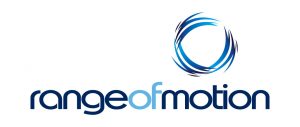
SESSION NOTES: Relative Strength (318, 319, 875, 876)
Take ten minutes each to find a one rep max for each of the two movements.
Programming Science:
Although barbell work is often trained with a strength focus, upper body bodyweight movements are often only trained for high reps with stamina. However, the high percentage of fast twitch muscle fibres in the upper body make it perfect for adding load.
This session contains both a press element and a pull element.
This session is more about ‘testing’ than ‘training’. Although the majority of your exercise program should be about ‘training’ and ‘practice’ (both of which increase your health, fitness and performance), it is also important to be able to track your progress to gauge the success of the program.
That being said, there is a definite (though not prioritised) training benefit of this session too, with benefits for strength, power and speed development.
Health and Body Composition Benefits:
Resistance training, in this case using your own body (and maybe added weight) as the load, makes you stronger. Strength is one of the greatest predictors of both your lifespan (how long you live) and your healthspan (how long you live in a healthy state).
Resistance training like this will also improve your flexibility (by going through a full range of motion), posture and coordination. It will also build stability around your joints and spine to give you a healthy musculo-skeletal system and reduce joint and back pain.
Because you’re using your own body as the form of resistance, this session will improve your strength to weight ratio – making you better able to move your body around.
As a result of this style of session, you will experience changes in blood chemistry, including favourable effects on cholesterol, blood glucose, triglyceride and lipid levels.
This session increases your lean muscle mass. Muscle is a metabolically active tissue, so increasing it will maximise how much energy your body burns at rest. This makes it an effective session to reach healthy levels of body fat, both visceral fat (around the organs) and subcutaneous fat (under your skin). After this session, your body will go through a prolonged state of ‘EPOC’ (excess post- exercise oxygen consumption), meaning you’ll continue burning energy long after you finish training – further aiding healthy body composition.
Performance Benefits:
This session is more about ‘testing’ than ‘training’. Although the majority of your exercise program should be about ‘training’ and ‘practice’ (both of which increase your health, fitness and performance), it is also important to be able to track your progress to gauge the success of the program.
One benefit of maximal lifting is the need for a very high level of muscle recruitment to achieve a successful, heavy lift. This can increase lifting efficiency by teaching the individual how to achieve this very high percentage of muscle recruitment.
Although testing is the primary purpose of this session, the heavy levels of resistance are also designed to increase your strength – increasing both your one rep max, and your ability to lift submaximal weights. By being stronger, you can lift more weight, and you will be able to lift submaximal weights faster and for higher reps because they’ll be at a lower percentage of your max.
The heavy levels of resistance in this session are designed to increase your upper body relative strength – increasing both your one rep max, and your ability to perform high reps of bodyweight movement. By being stronger relative to your weight, you can lift more, and you will be able to move your body faster and for higher reps because you’ll be lifting a lower percentage of your max.
As strength is an element of power, getting stronger will also improve your ability to move faster – beneficial for more power-based, explosive gymnastics movements.
This session will also improve the efficiency of your fast-twitch muscle fibres (those responsible for lifting heavy and fast), and will improve your neuromuscular efficiency (your ability to turn on a very high percentage of your muscle fibres).
Strategy:
Build to around 80% of your max before the 10 minutes starts. Then, take no more than five lifts to find a max. Note, you should build to your maximal weight with good technique. If you reach technical failure, cease lifting, and record that as your max. It’s ok to build to a weight that you fail at, but only if the failure is due to lack of strength, not technique breakdown.
How it Should Feel:
You should feel equally limited by your cardiorespiratory endurance and strength/stamina. It should be difficult both because the loads are heavy, and because you’re breathing hard.
During each interval, even though you’re holding a consistent workrate, the rate of perceived exertion should increase.
This session will make you feel unfit – don’t worry, that’s normal.
Scaling Guidelines:
If you need assistance, use band assistance, rather than shortening the range of motion.
Common Mistakes:
Sacrificing technique to achieve a new max is a common fault here. Find the heaviest (or least assisted) lift you can do without technical failure.




